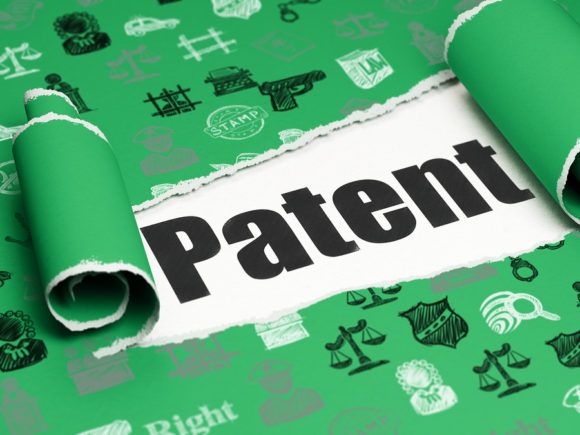The Supreme Court made it easier on Wednesday for U.S. manufacturers to infringe patents held by competitors by manufacturing all but one of the infringing components abroad. The practical consequences could be significant, as could the court’s apparent view that the key U.S. appeals court for patent cases has been too sympathetic to patent holders.
The case, Life Technologies Corp. v. Promega, arose from a conflict over a toolkit for genetic testing used by law-enforcement. Promega Corp., a Wisconsin-based biotech company, held the exclusive license to a patent for the toolkit, and sublicensed the manufacture to Thermo Fisher Scientific Inc.’s Life Technologies unit. In turn, Life Technologies made four of the five components of the kits in the U.K., and a single component, called the Taq polymerase, in the U.S. It shipped the Taq polymerase to the U.K. to be combined with the other components and then sold.
Promega sued Life Technologies for infringing its patent by selling the kits for clinical and research uses that went beyond the law-enforcement license. Life Technologies defended itself by saying that its actions weren’t covered by federal law because the manufacture took place outside the U.S.
The relevant law is contained in a statute that prohibits supplying from within the U.S. “all or a substantial portion of the components of a patented invention.”
The law was passed by Congress to plug a loophole created by a 1972 Supreme Court decision that said it wasn’t a patent infringement to manufacture the component parts of an infringing object in the U.S., then ship them abroad for assembly.
The U.S. Court of Appeals for the Federal Circuit, which specializes in patent law, found for Promega. It held that the words “a substantial portion of the components” could be satisfied by a single component, provided that component was important enough to count as substantial. It pointed out that in ordinary English, one component of something could certainly be treated as a “substantial portion” of it.
And the Federal Circuit concluded that the polymerase was in fact a substantial portion of the components of the toolkit, which could not be built without it. Behind its holding was the implicit logic that the point of the statute is to stop U.S. firms from getting away with infringement by manufacturing most of the components abroad while still manufacturing a substantial part at home.
The Supreme Court disagreed in an opinion that drew no dissent. Writing for the court, Justice Sonia Sotomayor focused on the words of the statute, not its purpose.
In particular, she ruled that the law refers not to a substantial portion of the final manufactured product, but rather to a substantial portion “of the components.” Sotomayor read this language to mean that that the substantial-portion test was not qualitative, relating to the importance of the U.S.-manufactured component, but purely quantitative, relating only to the total number of components manufactured in the U.S.
This led the court to the conclusion that a single component could not by definition count as a substantial portion of the components.
The result lets manufacturers avoid being hit with an infringement suit by making no more than one of the components of an infringing product in the U.S.
In a separate concurrence, Justice Samuel Alito clarified that more than one U.S. manufactured component still might not constitute infringement. Even assuming that’s true, a wise manufacturer can certainly treat one component as a safe harbor.
In practice, this could lead to absurd results. In some instances, a single component might be by far the most important element of a manufactured article – and an infringer could make it in the U.S. intending to ship it abroad for assembly with other, trivially important components.
In defense of its opinion, the court said that it didn’t want U.S. juries to have to engage in the difficult process of figuring out whether a particular manufactured component was substantial enough to justify applying infringement law. That sounds plausible on the surface. But in reality, juries make such judgment calls all the time.
The court’s true worry seem to be that juries would be too sympathetic to patent holders, finding a component to be substantial when it might not really be so. That concern reflected a more general attitude about the Federal Circuit that the Supreme Court has been demonstrating for several years: the justices seem to believe the specialized patent court is too sympathetic to patent holders.
The justices often reverse Federal Circuit decisions unanimously. That’s their prerogative. But by doing so, they tend to overlook the functional goals that the Federal Circuit typically promotes. And that may in the end be bad for business.
This column does not necessarily reflect the opinion of the editorial board or Bloomberg LP and its owners.Feldman is a Bloomberg View columnist. He is a professor of constitutional and international law at Harvard University and was a clerk to U.S. Supreme Court Justice David Souter. His books include “Cool War: The Future of Global Competition” and “Divided by God: America’s Church-State Problem — and What We Should Do About It.
Related:
- Supreme Court Orders Refiguring of Samsung’s Damages in Patent Fight with Apple
- Supreme Court Upholds Quick Patent Cancellation Process in Speedometer Case
Topics USA Manufacturing
Was this article valuable?
Here are more articles you may enjoy.



 High-Net-Worth Risk Appetite Drops as Some Regions Show Stabilization
High-Net-Worth Risk Appetite Drops as Some Regions Show Stabilization  Cloudy Future for Bourbon Has Jim Beam Closing Distillery for a Year
Cloudy Future for Bourbon Has Jim Beam Closing Distillery for a Year  Longtime Motel 6 Spokesman Tom Bodett Settles Lawsuit Against Chain
Longtime Motel 6 Spokesman Tom Bodett Settles Lawsuit Against Chain  Freight Broker Says $400K in Lobster Meat Stolen in Fictitious Pickup
Freight Broker Says $400K in Lobster Meat Stolen in Fictitious Pickup 

